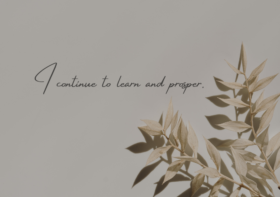How to Establish and Communicate Boundaries Effectively



Boundaries are essential to your mental and physical health.
Setting boundaries is important for maintaining healthy relationships and preserving your well-being. It took me a long time to realize that setting boundaries is NOT rude, unkind, ill-mannered, but they are ESSENTIAL to healthy relationships, including with you parents, siblings, significant other. Here’s how to establish and communicate boundaries effectively:
It took me a long time to realize that setting boundaries is NOT rude, unkind, ill-mannered, but they are ESSENTIAL to healthy relationships, including with you parents, siblings, significant other.
1. Self-Reflection:
Before setting boundaries, take time to reflect on what you need and what limits you want to establish. Consider your emotional, physical, and mental well-being.
2. Define Your Boundaries:
Clearly articulate the specific boundaries you want to set. Whether it’s about personal space, communication frequency, or certain topics, be specific about your limits.
3. Communicate Openly:
Initiate a calm and respectful conversation with the person you want to establish your boundaries with. Choose an appropriate time and place to discuss your boundaries, ensuring minimal distractions.
4. Be Assertive:
Express your boundaries confidently and assertively. Use “I” statements to convey your feelings and needs without blaming or accusing.
5. Explain the Reasoning:
Share the reasons behind your boundaries, so the person understands your perspective. This can promote empathy and cooperation.
6. Stay Consistent:
Once you’ve set a boundary, stick to it consistently. This helps reinforce the message and prevents any confusion.
7. Offer Alternatives:
Suggest alternative ways of interacting that respect your boundaries while maintaining a positive connection. This shows that you value the relationship.
8. Set Consequences:
Clearly communicate the consequences of crossing your boundaries. This could involve limiting contact or taking a break from interactions if your boundaries are not respected.
9. Practice Self-Care:
Prioritize self-care and well-being. Setting boundaries may face resistance, but it’s important to prioritize your health and happiness.
10. Enlist Support:
If you find it challenging to communicate boundaries directly, you could involve a neutral third party, like a therapist or mediator, to facilitate the conversation.
11. Stay Calm:
If the person reacts negatively to your boundaries, remain composed and respectful. It may take time for them to adjust.
12. Be Flexible:
Be open to occasional adjustments to your boundaries based on changing circumstances or evolving relationships.
13. Reinforce Positive Behavior:
When the person respects your boundaries, acknowledge and appreciate their efforts. Positive reinforcement can strengthen your relationships.
14. Lead by Example:
Demonstrate respect for others’ boundaries as well. By modeling boundary-setting and respect, you encourage a healthier relationship dynamic.
Remember, setting boundaries is a gradual process, and it’s okay to encounter challenges along the way. The goal is to establish a balance that fosters healthy connections while respecting your individual needs and well-being.
I know it learning to set boundaries has helped me tremendously to improve my mental health. I hope that this helps you begin or continue your journey in your growth and well-being!
Follow me on IG and shoot me a DM if you have any questions or concerns: @Dr.Mursi.MD
Much love,




